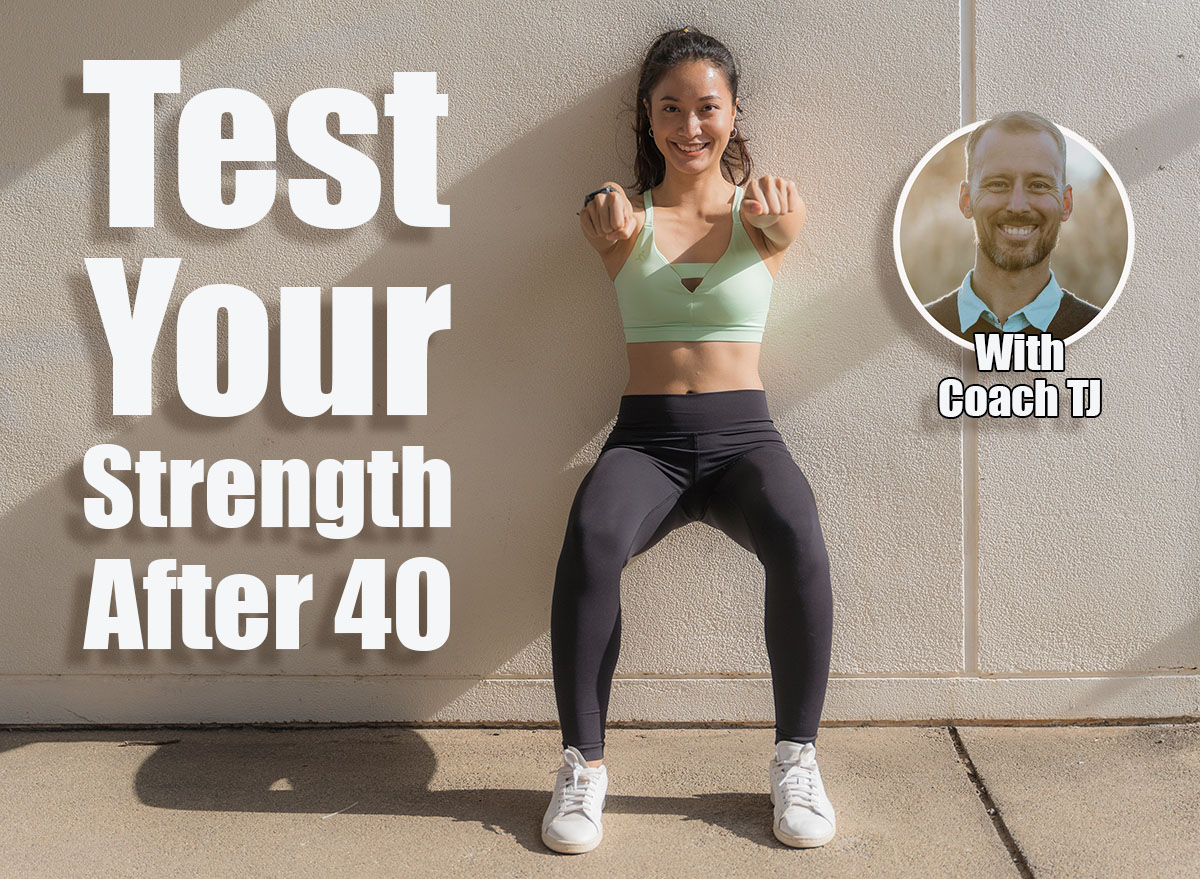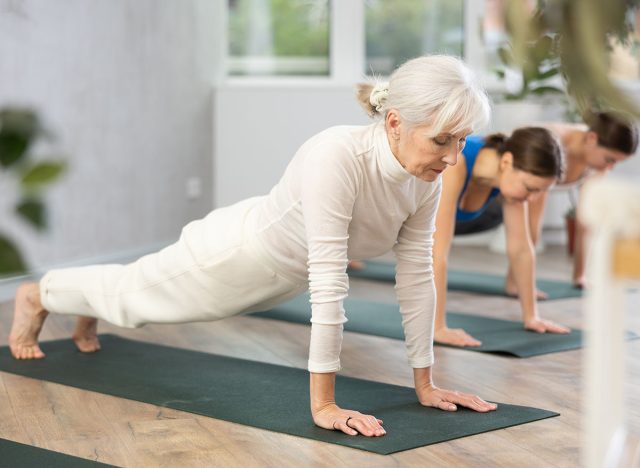If You Can Hold These 5 Positions After 40, You’re Stronger Than Most Gym-Goers

Hitting 40 often comes with a reality check about your body. The combination of desk jobs, weekend warrior workouts, and inconsistent training takes its toll, leaving hidden gaps in strength that most people don’t even realize they have. By the time people hit their 40s, the wear and tear leaves some common issues: weak stabilizers, especially in the hips and shoulders; muscular endurance loss of the postural muscles, which often leads to slumping and back pain; grip decline, which predicts overall health and injury risk; and asymmetries, where one side of the body compensates for the other, leading to postural deviations and pain. Here are five holding positions that will reveal your true strength and separate you from the average gym-goer.
Why Your Holding Positions Reveal Your True Strength
When we do dynamic lifting, we can often hide our strength deficits by using momentum. By using static holds, we take this momentum away and get a much clearer view of our true strength. This is due to the fact that isometric holds reveal joint instability and muscular endurance issues, test your ability to resist fatigue under gravity, and allow you to focus on posture, breathing and core control, all of which are invaluable after the age of 40.
5 Strength Tests to Prove You’re Fitter Than Most at 40+
The Wall Sit Tests Your Lower Body Endurance
Exercise number one is the wall sit. This tests the muscular endurance of the lower body. Our initial goal is two minutes of the wall sit to reach what we would consider a general fitness standard; the athletic standard is five minutes. As mentioned above, this exercise works the entire lower body. That includes the quads, glutes, calves, and especially all the stabilizers of the hip, knees, and ankles.
How to perform:
- Stand against the wall and walk your feet forward around 12 to 15 inches
- Position yourself at the appropriate angle for your level:
- Quarter squat: 15 to 20° bend at the hips and knees
- Half squat: 60° bend in the hips and the knees
- Full squat: 90° angle at the ankle, knee and hip joint
- Start with the quarter squat until you can master it, then move on to the half and eventually the full squat
- Keep your back flat against the wall
- Keep the back of your head against the wall
- Keep the back of your hands against the wall
Common mistakes to avoid:
- Allowing the knees to collapse
- Pushing your hands on the thighs
- Arching your low back
- Trying to go too deep too early
RELATED:
The Prone Plank Challenges Your Core and Shoulders
Exercise number two is the prone plank. The prone plank is going to test our deep core, glutes, and shoulders. Once again this exercise puts a lot of work on the stabilizers of the core and the shoulder. The initial goal is to hold the plank for two minutes to achieve general fitness standards, and five minutes for athletic standards.
How to perform:
- Start with your elbows directly underneath your shoulders
- Begin with knees on the ground, staying shoulder width apart
- Keep your body in a straight line from your head to your pelvis
- Once you’ve mastered it from your knees, straighten the knees so that your weight is distributed from your arms and your feet
Common mistakes to avoid:
- Allowing your hips to sag towards the floor
- Raising your butt up towards the ceiling
- Holding your breath
- Reaching your head forwards toward the ground
- Remember everything should be directly in line
The Side Plank Targets Your Obliques and Hip Stability
Exercise number three is the side plank. The side plank is going to challenge our obliques, glute medius and once again our shoulder stabilizers.
How to perform:
- Lie on your side keeping your elbow directly under the shoulder
- Lift your hips up into a straight line
- For advanced version: bring your knees up off the ground so that there’s a straight line from your ear to your shoulder to your hips to your ankles
- Lift your hips and your ribs up towards the ceiling to create a concavity on the bottom side
- Push your ribs and your hips up so high that you create a bridge that someone could crawl underneath you
Common mistakes to avoid:
- Not lifting up high enough to create the bridge
- Twisting your body during the exercise
- Swaying forward or backwards
- Remember: imagine you are stuck between two panes of glass
Prone Back Extensions Test Your Posterior Chain
Exercise number four is prone back extension, also known as Superman. This exercise tests the strength of your spinal erectors, glutes, and shoulders. General fitness standards are two minutes, with athletic standards being five-minute holds.
How to perform:
- Lie face down, arms extended overhead at about 45°
- For beginners: start by lifting just your head, arms and chest off the ground
- Intermediate: keep your upper body on the ground and lift just your hips, legs and feet off the ground
- Advanced: lift both upper and lower body off the ground to perform the full prone back extension
Common mistakes to avoid:
- Trying to lift up too quickly
- Creating too much neck extension
- Not activating the transverse abdominis
The Dead Hang Reveals Your Grip Strength
Our last exercise is the dead hang from a bar. This exercise tests the strength of our hands, forearms, lats and shoulder stabilizers. The isometric standards are the same as all the other exercises: two minutes for general fitness and five minutes for athletes.
How to perform:
- Beginner: step up onto a block and grab both hands onto the bar, then let your weight sag down while keeping your feet on the block
- Advanced: remove the block and let your body fully hang from the bar
- Challenge version: try the exercise one hand at a time
Common mistakes to avoid:
- Shrugging the shoulders
- Swinging the legs
- Flaring the ribs
- Holding your breath
How Long Does It Take to Build This Kind of Strength

If you fail these tests now, don’t worry and certainly don’t give up. With 2 to 3 focused sessions per week, most people can hit the beginner benchmarks in around 6 to 8 weeks and hit the athletic standard within six months. Building isometric endurance happens fast once you specifically target it. Some quick tips are to progress your time in 10 to 20 second intervals every 2-3 weeks. Also be sure that you are getting adequate rest periods in between sessions—generally 48 hours is ideal.
What to Do If You’re Not as Strong as You Thought

My best advice for someone over 40 who discovered they’re not as strong as they thought is to not see it as a weakness—use it as a data point. By simply tracking your time and effort, you will see gradual improvement over the weeks. These gradual improvements will reward your brain with dopamine, making it much easier to stick with the process. Remember, to build strength and muscle safely takes time and requires small increments of increased challenge for long-term results.
Be sure to focus on your form over your time. Performing these exercises with poor form is going to lead to injuries, causing you to miss training time. After the age of 40, strength is not just about what you can lift—it’s about what you can maintain. If you can master these five exercises, you’re not just strong in the gym, you’re resilient in life.
Looking for easy ways to lose fat? Here’s How Long Your Walking Workout Should Be To Shrink Belly Fat.